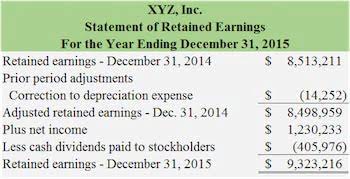
Incremental cost is choice-based; hence, it only includes forward-looking costs. The cost of building a factory and set-up costs for the plant are regarded as sunk costs and are not included in the incremental cost calculation. Incremental costs are relevant in making short-term decisions or choosing between two alternatives, such as whether to accept a special order. If a reduced price is established for a special order, then it’s critical that the revenue received from the special order at least covers the incremental costs.
In this case, each additional unit costs $50 ($500 divided by 100 units), making it easier for ABC Manufacturing to evaluate the profitability of the promotional campaign. Relevant costs (also called incremental costs) are incurred only when a particular activity has been initiated or increased. This means the cost of production to make one shirt is at $10 in your normal production capacity. Due to economies of scale, it might cost less in producing two items than what was incurred in producing each one separately. Let us assume that it costs 950 for producing two items simultaneously. The concept of opportunity cost describes the reward or loss resulting from a decision made between respective alternatives.
How Does Incremental Costs Work?
You can use this as a tool to manage cash flow while ensuring you are prepared for cost increases. Scaling production is a great goal but you must be sure the market is prepared to purchase and absorb your productions at the increased level. As your production rises, the cost per unit is lowered and your overall profitability increases. You can setup a spreadsheet with the formula to automatically calculate incremental costs at any level of production.
Producing the products, however, might bring incremental costs because of the downsizing. The management must look at the additional cost of producing the products under one roof. This could mean more deliveries from vendors or even more training costs for employees. If no excess capacity is present, additional expenses to consider include investment in new fixed assets, overtime labor costs, and the opportunity cost of lost sales. Incremental cost specifically tells business owners about the worthiness of allocating additional resources for a new production volume.
What Are the Two Stages of Allocation in Activity-Based Costing?
Only variable production costs, like raw material and variable labor, are included in the calculation of incremental cost. Analyzing production volumes and the incremental costs can help companies achieve economies of scale to optimize production. Economies of scale occurs when increasing production leads to lower costs since the costs are spread out over a larger number of goods being produced. In other words, the average cost per unit declines as production increases.

A variable cost is a specific material utilized in production because the price increases as you order more. Bulk orders are frequently discounted, introducing a variable into your incremental calculation. The incremental cost is an important calculation for firms to determine the change in expenses they will incur if they grow their production. These additional charges are reported on the company’s balance sheet and income statement.
International Financial Reporting Tool perfect reporting according to IFRS
You may estimate how much you should budget for your firm and how much profit you might make by conducting this type of cost analysis ahead of time. So, you can then assess whether or not it makes business sense to expand operations. With foresight and planning, a business can implement cost leadership strategies to gain an advantage over other competitors within their industry.
A very simple example of incremental cost would be a factory producing widgets where it takes one employee an hour to produce one widget. As a simple figure, the incremental cost of a widget would include the wages for an hour in addition to the cost of materials used in production of a widget. A more exact figure could comprise added costs, like electricity consumed if the factory had to stay open for a longer duration, or the cost for shipping the additional widget to a consumer.
Imagine you own a smartphone manufacturing company that expects to sell 20,000 devices. Each smartphone costs you $100 to produce, and your selling price each smartphone is $300. Companies utilize incremental revenue as a comparative measure with their baseline revenue level to calculate their return on investment. They may then determine how much money they can afford to spend on marketing efforts and how much sales volume is required to generate a profit for the company. It simply computes the incremental cost by dividing the change in costs by the change in quantity produced.

So, the proper allocation of incremental costs helps the company in various decision-making processes and for the proper presentation of its accounts. The long-run incremental cost for lithium, nickel, cobalt, and graphite as critical raw materials for making electric vehicles are a good example. If the long-run predicted cost of the raw materials is expected to rise, then electric vehicle prices will likely be higher in the future.
Understanding the additional costs of increasing a product’s manufacturing is beneficial when deciding the retail price of the product. Companies seek to maximize production levels and profitability by analyzing the incremental costs of manufacturing. When evaluating a business segment’s profitability, only relevant incremental costs that can be directly linked to the business segment are examined. Long-run incremental cost (LRIC) is a forward-looking cost concept that predicts likely changes in relevant costs in the long run. It includes relevant and significant costs that exert a material impact on production cost and product pricing in the long run. They can include the price of crude oil, electricity, any essential raw material, etc.
- Take your learning and productivity to the next level with our Premium Templates.
- This could mean more deliveries from vendors or even more training costs for employees.
- Because the sunk costs are present regardless of any opportunity or related decision, they are not included in incremental analysis.
- Incremental cost is the total cost incurred due to an additional unit of product being produced.
- Companies utilize incremental revenue as a comparative measure with their baseline revenue level to calculate their return on investment.
- Divide the cost by the units manufactured and the result is your incremental or marginal cost.
